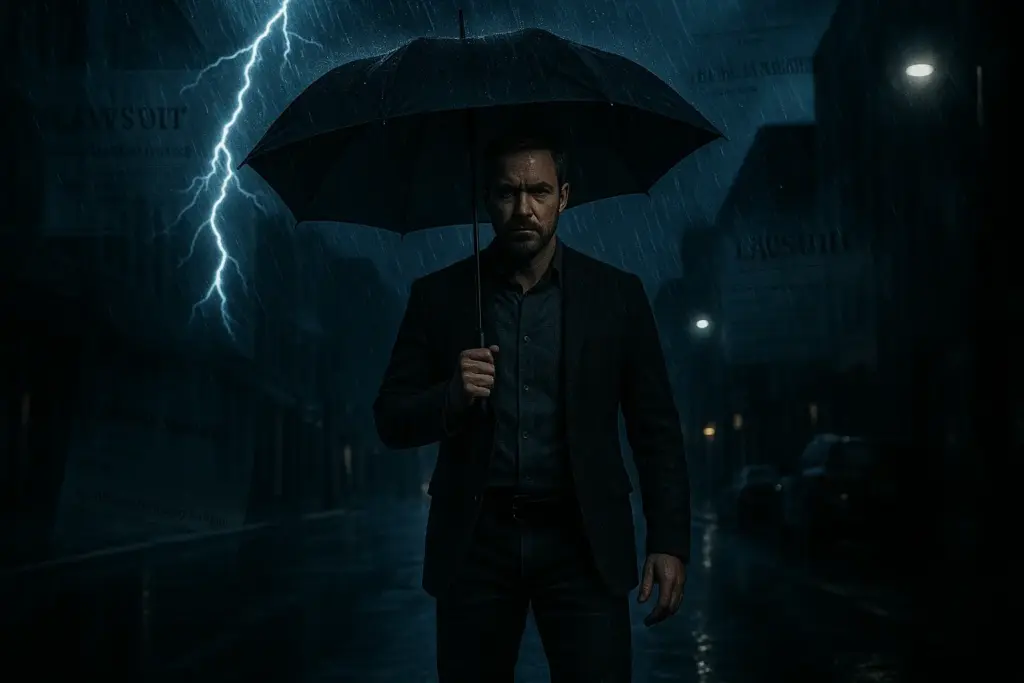If you’ve been searching for a business owners guide to commercial umbrella insurance, chances are you’ve hit that moment every business owner dreads—realizing your existing coverage might not stretch as far as you thought.

One small business owner found out the hard way. A loyal employee slipped on an icy walkway just outside the shop. The medical bills ballooned. The general liability policy covered most of it—but not all. Suddenly, he wasn’t just running his business. He was trying to protect everything he’d worked for.
That’s when he heard about commercial umbrella insurance. It sounded like something built for big corporations, not local operations like his. But the more he looked into it, the more it seemed like the missing piece.
This business owners guide to commercial umbrella insurance is here to help you avoid the stress and second-guessing. We’ll break down the confusing terms, explain what they mean in real life, and give you the clarity you need to make confident decisions—without spending your weekends decoding insurance paperwork.
No fluff. No sales pitch. Just straight answers to the questions you didn’t know you should be asking—until now.
What Is Commercial Umbrella Insurance?
Commercial umbrella insurance isn’t a luxury—it’s a safety net. And if you’re here for a business owners guide to commercial umbrella insurance, you’re in the right place to understand how that net works.
At its core, this type of policy sits on top of your existing liability coverage. It kicks in when your base policy—whether that’s general liability, auto, or employer’s liability—hits its limit. Think of it like an overflow tank. When the first bucket fills up, the umbrella picks up the excess so you’re not stuck paying out of pocket.
Let’s say your business is hit with a $2 million lawsuit, but your general liability policy only covers $1 million. Without commercial umbrella coverage, you’re responsible for the rest. With it, the umbrella can step in and cover the gap—often up to another $1 million or more, depending on your policy.
Why It Matters for Business Owners
Here’s the kicker: lawsuits, medical claims, and legal fees add up faster than most business owners expect. One major incident can wipe out years of savings or force you to sell off assets. And it doesn’t have to be something dramatic—just an unfortunate accident, a claim that escalates, or a legal technicality can put your business at risk.
That’s why this business owners guide to commercial umbrella insurance exists: to help small business owners understand that even if they’re careful, they’re not invincible. Umbrella insurance adds a second layer of defense that can protect your livelihood when the unexpected happens.
This isn’t about preparing for rare worst-case scenarios—it’s about covering the blind spots you didn’t even realize were there.
Understanding Liability Limits for Commercial Umbrella Insurance
One of the most confusing parts of commercial insurance is the idea of limits. This section of the business owners guide to commercial umbrella insurance is here to clear that up—because knowing how your liability limits work can be the difference between feeling secure and being blindsided.
Two Limits You Need to Know
There are two types of limits at play:
- Underlying Limits – These are the limits set by your base policies, like general liability or auto liability. If one of these policies covers up to $1 million, that’s your underlying limit.
- Umbrella Limits – This is the additional coverage your umbrella policy provides after your underlying limit is maxed out. If your umbrella has a $2 million limit, and your base policy runs out, the umbrella can add up to $2 million more.
Here’s where things get tricky—your umbrella policy usually won’t start paying unless your underlying policies meet certain minimums. If they fall short, you might be on the hook for the difference.
A Simple Example
Imagine your landscaping company is sued for $1.5 million after a client trips over equipment left on-site. Your general liability policy covers $1 million. The remaining $500,000? That’s where the umbrella comes in—but only if your policy is set up correctly.
Miss the fine print, and you could be left with an expensive surprise.
Why It’s Easy to Get Caught Off Guard
Most business owners assume that if they’ve got coverage, they’re protected. But limits vary by policy, and a gap of just a few hundred thousand dollars can lead to major financial strain. Umbrella insurance helps close that gap, but only if you understand how the pieces fit together.
This business owners guide to commercial umbrella insurance is designed to keep that from happening. By understanding how liability limits work—and how umbrella coverage interacts with them—you’re putting yourself in a stronger position to protect your business, your assets, and your peace of mind.
Excess vs. Umbrella: What’s the Difference
Many business owners hear “excess” and “umbrella” and assume they mean the same thing. They don’t—and that misunderstanding can lead to big gaps in protection.
Excess Coverage: A Booster for One Policy
Excess liability coverage does one thing: it increases the limit on a single underlying policy. For example, if you have a commercial auto policy with a $1 million limit and add $2 million in excess coverage, that auto policy now has $3 million in total coverage.
But here’s the catch: it only applies to that one policy. It doesn’t offer broader protection. If the claim falls outside that specific coverage, the excess policy won’t help.
Umbrella Coverage: Broader and More Flexible
Umbrella insurance, on the other hand, adds coverage across multiple liability policies—general liability, auto liability, employer’s liability, and more. It not only extends limits, but it can also sometimes cover situations not included in your base policies, depending on how it’s written.
Think of it like this: excess coverage is an add-on to a single tool in your shed. Umbrella coverage is the roof that shields all your tools.
When It Really Matters
Say your delivery van is involved in a serious accident. Your auto policy covers $1 million, and the damages total $1.7 million. If you’ve added excess auto coverage, that helps. But if you’re hit with a separate lawsuit for defamation related to your advertising—a risk not covered by your base policies—only an umbrella policy with broader terms might respond.
This is exactly why this business owners guide to commercial umbrella insurance emphasizes understanding what you’re buying. Umbrella coverage often provides wider protection and fills in gaps you didn’t know existed—making it a smart move for businesses that face a variety of risks.
Drop-Down Coverage and Why It Matters for Your Business
You’ve probably heard that commercial umbrella insurance kicks in when your base policy runs out. That’s true—but there’s another layer of protection that most business owners don’t even realize they have: it’s called drop-down coverage.
Why it could be the backup you didn’t know you needed.
What Is Drop-Down Coverage?
Drop-down coverage comes into play when your primary policy doesn’t respond at all. This can happen for two main reasons:
- A coverage gap – The situation isn’t covered by your base policy, but is covered under the umbrella policy.
- An exhausted aggregate limit – You’ve already hit your yearly payout limit on your base policy, so it no longer applies—even if the claim type is typically covered.
When either of these happens, your umbrella policy can “drop down” to provide primary coverage. That means instead of just extending your limits, it acts as your first line of defense.
Why It’s a Big Deal
Let’s say you’re hit with a lawsuit over something like false advertising or a non-physical personal injury—types of claims that some general liability policies exclude. You might assume you’re out of luck. But if your umbrella policy includes drop-down protection for that exposure, it can cover the defense costs and settlement—even if your base policy says no.
Without drop-down coverage, you’d be footing the entire bill out of pocket. With it, you get legal defense, settlement funds, and breathing room.
What to Ask Your Agent
Not all umbrella policies offer drop-down protection. Some do, but only under specific conditions. That’s why it’s worth asking your agent questions like:
- “What types of exclusions trigger drop-down coverage?”
- “How are defense costs handled under the umbrella policy?”
- “Are there situations where the umbrella acts as primary insurance?”
Knowing the answers helps you avoid unpleasant surprises—and puts you in control of your coverage.
More Than Extra Coverage—It’s Peace of Mind
You don’t need to be a risk expert to protect what you’ve built—you just need to ask the right questions and know where your current coverage might come up short. Hopefully, this guide to commercial umbrella insurance gave you the clarity to start doing exactly that.
When the unexpected happens—a lawsuit, a claim that spirals, or a gap you didn’t even realize existed—having a policy that steps in at the right time can mean the difference between survival and setback. It’s not just about extra coverage. It’s about knowing that a single moment won’t undo years of hard work.
If you’re ready to explore whether this added layer of protection makes sense for your business, take a closer look at your options for Commercial Umbrella Insurance.
It might be the simplest way to protect everything that matters—without adding more to your plate.
